
Because it is isolated by the sea, New Zealand's plant and animals have not had to contend with browsing and predatory animals. New Zealand's plant and animal life is unique to the world and is a wonderful educational source. There are no snakes, aligators, crocodiles or any other dangerous animals and there is only one poisonous spider which is native to New Zealand, the Katipo.
Below is a short description of only a few of New Zealand's plants and animals.
I have included quite a few pics of the plant and animal life consequently, this page may take a while to load - please be patient - it is definitely worth a look

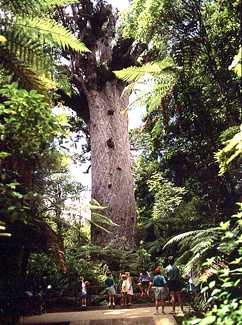
|
Kauri The Kauri is the most well known tree in New Zealand. It grows up to 50m and is mainly found in the far north. The largest Kauri in the world is Tane Mahuta (Lord of the Forest). It is approximately 1250 years old and is 14.4m in diameter and the first branch is 17.7m off the ground. It is a sought after wood for building and cabinetmaking in New Zealand. |
Totara
The Totara is another one of New Zealand's well known trees. It is a large forest tree growing up to 30m.
|
Pohutukawa
The Pohutukawa is a wonderful flowering tree growing up to 15m. It has a short trunk and wide spreading branches which are covered in red flowers around December. It is also known as the New Zealand Christmas Tree and is mainly found in coastal areas to about half way down the North Island. |
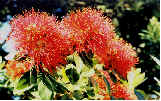
|
The Tawa is another forest tree sought after for building. It grows to 25m and has yellow green willow like leaves. It has large purple plum like fruit which is a favourite food of the New Zealand native pidgeon.
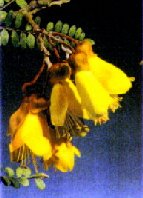
|
Kowhai
The Kowhai grows up to 10m and has wide spreading drooping branches with small fern like leaves. It has beautiful golden yellow flowers which develop into large seed pods. It is a favourite food of the New Zealand native bird, the tui. |
Rata
The Rata is another large forest tree with intense red flowers similar to the Pohutukawa.
A tall distinctive tree growing to 30m.
|
Kotukutuku (Tree Fuschia)
The Kotukukutu grows to 14m and has a red papery bark and a twisted form. It is the world's largest fuschia. |
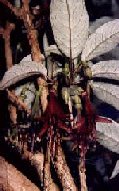
|
A small tree growing up to 4m and usually has pink flowers. It is sought after as firewood as it is very hot burning.
Supple Jack
A climbing vine with green shiney leaves and has red berry like fruit. It is a vine that enables you to use to swing from a tree to another tree or the ground.
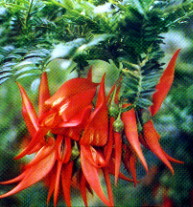
|
Kaka Beak
The Kaka Beak is a small wide spreading shrub and has red or yellow flowers. The red Kaka Beak is now rare in the wild. |
Native Iris
The native Iris is a small plant growing to 60cm. It has stiff sword like yellow tinged green leaves with nice small white flowers followed by decorative orange yellow fruit.
|
Orchid This is one of the many native Orchids which abound in the forest, alpine and coastal areas. |

|
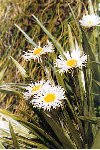
|
Mountain Daisy As the title suggests this daisy is found at a high altitude in New Zealand. |
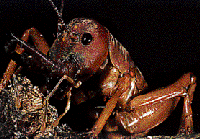
|
Weta The Weta is the world's heaviest insect. They are essentially a nocturnal, flightless grasshopper and were called by the Maori the Demons of the Forest. |
|
Tuatara The Tuatara is the world's oldest living reptile and is thought not to have changed for 220 million years. It's skin is scaly and loose and soft to the touch. It lives in a burrow and is nocturnal. The tuatara grows up to 24cm in length. |

|
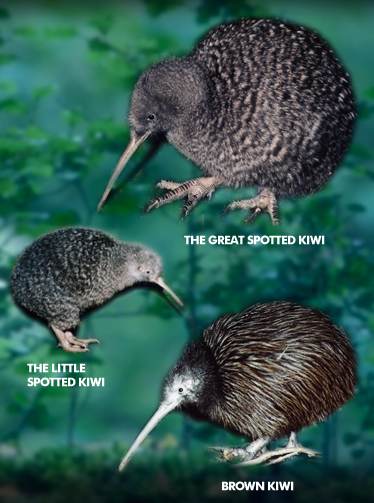
|
Kiwi
The Kiwi is the national bird of New Zealand and the most well known worldwide. It is the smallest member of the flightless bird group. It burrows in the ground and is largely nocturnal. There are six species of kiwi of which the brown kiwi is most common and is found in the central and northern parts of the North Island. It has one of the largest egg-to-body weight of any bird. It is also the only known bird to have external nostrils at the end of it's beak. |
|
Kea The Kea is the world's only mountain parrot. It is a very inquisitive bird and is not afraid to investigate any belongings of visitors. It loves to peck and rip to shreds the rubber on cars and causes a lot of damage each year. |
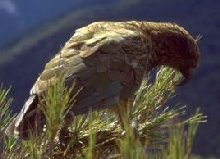
|

|
Kakapo
The Kakapo is the world's rarest, largest and only nocturnal parrot. |
|
Korimako (Bellbird) One of New Zealand's best known birds because of it's melodic song. It is a honeyeater. |
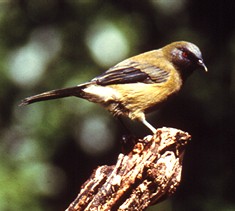
|
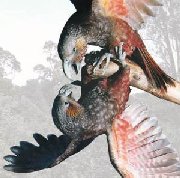
|
Kaka
The Kaka is a large hoisy parrot and are most active at dawn and dusk. They are regarded as the clowns of the forest. |
|
Takehe Another of New Zealand's flightless birds. It was thought to be extinct but was rediscovered in 1948 in Fiordland. It can only be seen in captivity. |
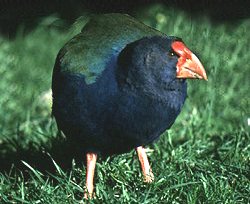
|
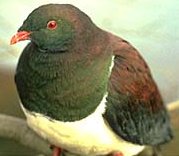
|
Kereu (Native Pigeon)
The Kereu is a large pigeon and is easily seen throughout New Zealand. It can be recognised by the loud flapping of it's wings when flying. |
|
Tui The Tui is a honeyeater of medium size, They mostly prefer the nectar from the kowhai, fushcia, rewarewa, flax pohutukawa and the rata, but they also feed on fruit and insects. The tui is a wonderful mimic. |
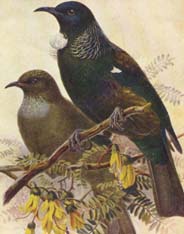
|
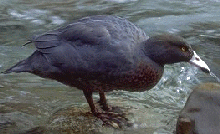
|
Blue Duck
This uncommon duck is found by rapidly flowing streams where it feeds on larvae, scraping them from the underside of rocks. It is not afraid of humans and will continue about its business unless startled. |
|
Fantail This beautiful inquisitive little bird can be seen throughout New Zealand. It uses its large tail to manoeuvre as it catches insects on the wing. It is common in the backyard garden and is a source of amusement to all who see it. |
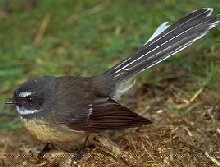
|
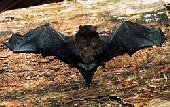
|
Pekapeka (Long Tailed Bat) This bat lives in the forest edge in hollow trees, overhangs and caves. |



|

With any questions or comments
| site designed and maintained by |  |